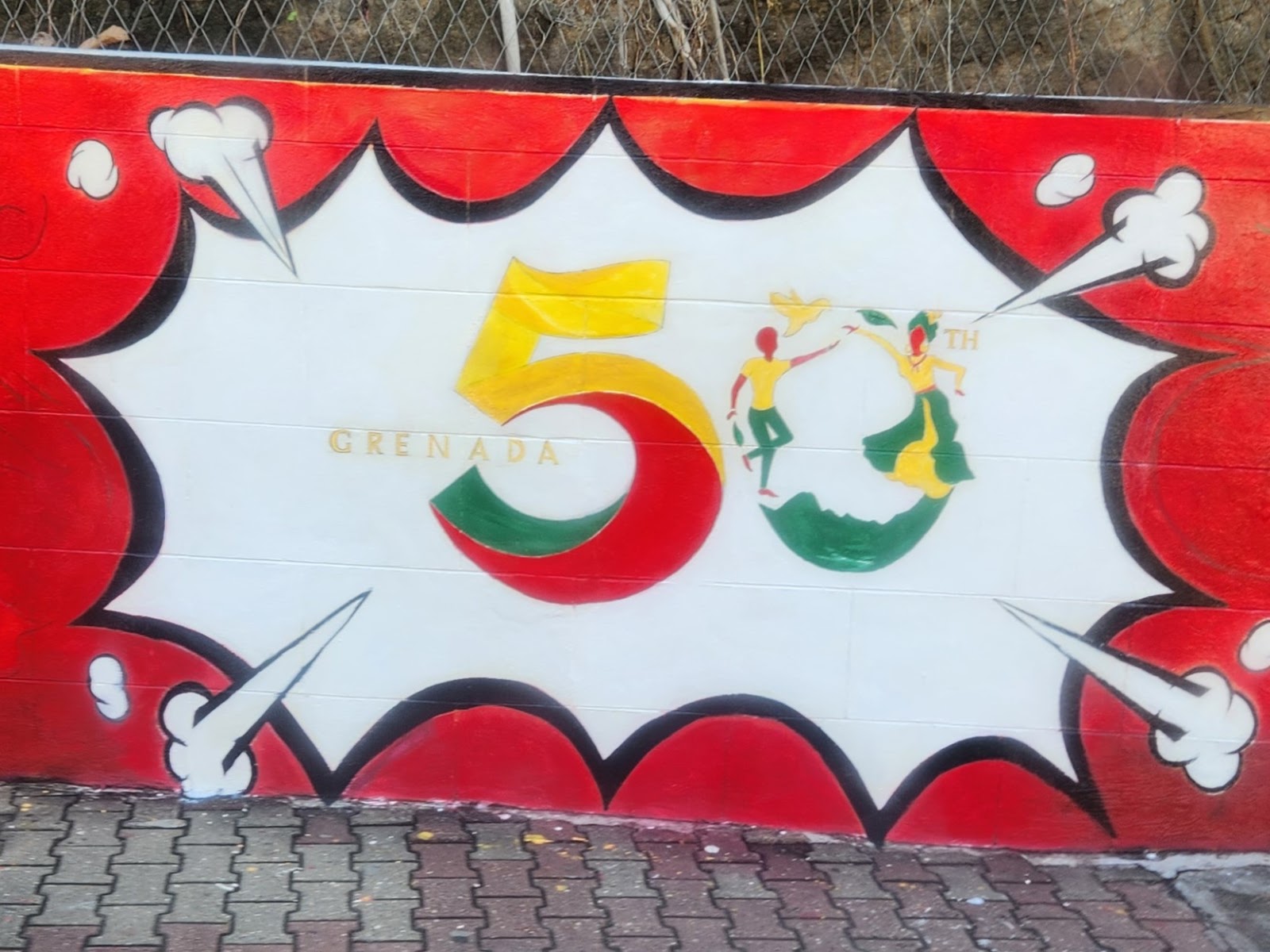The Meeting of the Waters - Manaus
Welcome to Manaus! This is the furthest point that
we will travel into the Amazon River (1,000 miles into it). Manaus is the capital of the state of
Amazonas. It is in the center of the Amazon
rainforest. It has over 2 million people
and is the largest city on the Amazon.
It is a city, but not very modern, seemed a bit run down actually. We
saw lots of graffiti alongside beautiful murals, lots of abandoned buildings,
too.
Today is
Sunday, but the first stop on our tour is not a church or cathedral, but an opera
house! Our guide told us he was born in
a canoe in the jungle, but is now a city boy, a teacher and part-time tour guide! He is taking us to the Opera!
Manaus is the city that rubber built. During
the rubber boom of the late 1800’s, it was the richest city in South
America! Manaus was also known as the “Paris
of the Tropics” because lots of wealthy Europeans came and settled here, and
guess what, they needed an opera house!
It is called the Teatros Amazonas, and cost $10 million dollars to build.
We toured it today, and it is indeed
opulent with a beautiful dome, Parisian crystal chandeliers, red and white marble columns,
beautiful intricate wood floors, and a hand painted mural on the ceilings.
Unfortunately, they were renovating the actual theater, so we didn’t get
to go in, but we saw models of it. Maybe next time if LeRoy ever gets his visa!
Of the
first troupe of performers that performed here, half died of yellow fever (yes,
we got our yellow fever shots!) After the rubber boom busted, the
opera house sat empty for almost 90 years, and just recently, in 1997, it has
been renovated and re-opened. Performers from all around the world
perform here now!
The beautiful San Sebastion Plaza is just in front of the opera house with a magnificent statue in the center called Monument Abertura dos Portos (Opening of the Ports Monument), and the plaza itself is tiled in alternating pattern that reminds you of waves. We saw this often when we were in Portugal.
After our
land tour, we were taken to a boat where we were taken down the Amazon to a
wonderful little restaurant on the water where we had a delicious lunch! Plantains, chicken, and some sort of seafood fritters. Watermelon is in season here, and it was so
good, sweeter than ours at home.
After lunch, we boarded even smaller boats that took us up a narrower bit of the river where we saw floating houses. They are tethered by rope. This enables the houses to rise and fall as the river level changes. Our guide was funny and said, if you didn’t like your neighbor, you could just cut your rope and float away from him OR you could cut his rope and he would float away from you!!!
We got
back on our big boat and made our way to another stop along the riverbank to
see natives perform a ritual dance. We
literally had to wade through the water, mud and muck to get back to the tent. The river had risen 8 inches from morning to
afternoon and washed away the make-shift bridge! There were only about 10 of us
that slopped our way through. Yes, we
were 2 of the 10. Along the slippery,
muddy path, we encountered a guy with a 30 lb anaconda draped on and around him! Needless to say, Vi sprinted to the other
side of the path (what mud?)!!!!
We watched
the chief introduce the ritual dance in native costume and language, and then a
group of barely clad people played flutes and things like didgeridoos while
dancing about. They then came over and
pulled the 10 of us into the dance. It
was surreal. Yes, even LeRoy danced! We left in awe and in muddy shoes, but when
in the Amazon ….
As we made our way back to the ship on the boat, we encountered the “Meeting of the Waters”. It is where the waters of the Rio Negro and the Amazon River, also known as Rio Solimões, meet. Here, the beige water of the Amazon River and the black water of the Rio Negro collide. BUT, they don’t blend into one another. Instead, there is a clear definitive line between the two. They never mix. It is fascinating to see. The rivers obviously don’t like playing together! Some fun facts …. The Rio Negro is relatively clear, even though it looks dark. It is usually around 82 degrees and flows much slower than the Amazon. The Amazon river’s water is beige looking because of all the sediment that it collected as it streams down from the Andes. The Amazon river is also much cooler than the Rio Negro, at 71 degrees, and flows almost twice as fast as the Rio Negro. Besides this, there is also a difference in pH levels between the two rivers. The Amazon River is where all the mosquitoes are, and the Rio Negro side, there are fewer mosquitoes! We didn't encounter any!
After a
long but incredible day, we tendered back to the ship, to wash the mud and
muck off and rest up for tomorrow.
See you at
Parintins!
LeRoy and
Vi






















Comments
Post a Comment